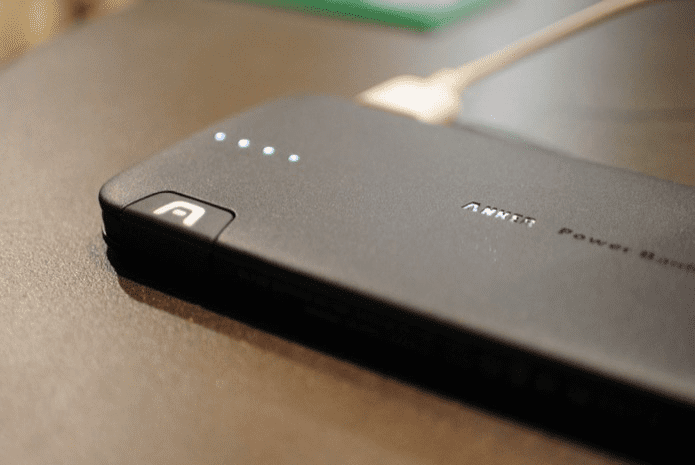While buying a power bank, you must consider factors like the brand name, customer service, and the actual capacity of the device, among many other things. In this post today, we’ll explore the things you need to check before buying a power bank. So, let’s get started.
1. Know the Conversion Game
Does a power bank with 5000mAh capacity yield two full battery cycles for a phone with a 2500mAh battery? As much as we like the answer to be yes, sadly it’s not so. The power rating is calculated at 5 volts for smartphones. But in the case of power banks, the power rating is calculated at 3.7 volts, since they carry Li-ion (Lithium-Ion) battery cells. And this difference causes a step down in the charge cycles. Thankfully, there’s a way to calculate the charge cycle of each power bank as per their capacity. Let us take the example of the 5000mAh power bank again. Here the total energy will be 5000mAh x 3.7V = 18500mWh. Now, we’ll need to convert the capacity at 5V, which will be 18500mWH / 5V = 3700mAh. And this is not the end of the story. You’ll have to take other elements into the picture, such as heat loss, resistance, and the deterioration of the product over time, among others.
2. How Charging & Recharging Works
How long can power bank hold charge? Well, it’s a little hard to tell the exact numbers, but one thing is for sure — it’s not forever. At best, you’ll get like 3-6 months, and that too when you have a high-quality power bank. Sadly, the number barely stretch a month for lesser quality power banks. The downside is that these numbers may change. A power banks’ ability to retain charge depends on several factors, and over time, it deteriorates. For example, if you do not charge it regularly or when you leave it in a place where the temperature fluctuation is far too regular.
3. Does It Have Warranty Coverage
Next, you’ll want to take into consideration like warranty coverage for the power bank. Also, you should check the feedback on the customer service for that particular company. Take the case of the Aukey 30000mAh USB-C Portable Power Bank. The reviews of this product have many users speaking of its excellent customer service. Aukey was quick to act on the complaints and even replaced a faulty product — be it a DOA, as per many folks.
4. Does It Have a Power Indicator
A Power Indicator is usually an overlooked feature. But let me tell you that it is one of the most important features. Power banks lose charge over time, and if you are not careful with the charge and the recharge cycles, you may often have to pick up a dead power bank. And if you don’t have much time in your hand for juicing it up, you may end up in a sticky situation. And that’s when the power indicators come in handy. This nifty little feature, usually in the form of tiny LED lights, lets you know the reserve energy in the product. In a few devices, you need to shake them to know the reserve energy. While in others, there’s a little button to switch on these indicators. Whatever the case may be, make sure that the product you are buying comes with these handy LED indicators.
5. How Fast Does It Charge Itself
Imagine preparing for a trip diligently only to find out that the power bank you decided to bring as a backup, takes forever to recharge. Bummer? It would be a nightmare on long flights (or summer camps), where you don’t find adequate power backup options. Portable power banks, especially the ones with bigger capacity, may take an awful amount of time to refuel. However, a decent capacity device with around 20000mAh capacity shouldn’t take more than 6-7 hours to replenish the charge. The better thing to do is to look for devices that offer Quick Charge input for charging the power back as well. That way, your power bank will be charged in a decent amount of time. For instance, take the case of the Anker PowerCore 20000 which boasts of Quick Charge 3.0 in the input, owing to which refueling takes only 6 hours.
6. Does It Support QC or Fast Charge
Speaking of Quick Charge, does your phone support Quick Charge? If yes, don’t settle for a power bank that charges at a lesser speed. Most Power banks don’t have Quick Charge (QC) on all the ports, but rather on just a single port. So, it only makes sense to check the capacity of all the ports. Again, it becomes a dicey situation if one of the ports has QC support (preferably QC 4.0 or 3.0), but the rest are at 1A. The best bet is to settle for devices that have a mix of ports at 2.4A, 5A or with the QC symbol.
7. The Brand Quotient
Do you trust the brand enough? That’s a question that we should be asking about any product we buy, be it a smartphone or a portable power bank. At times, even the smallest of brands churn out the best products while at other times, the biggest of brands can turn out sub-par products. A peek at the reviews section is what is going to save you from a lot of sorrow. If you are buying these gadgets online, spend some time reviewing the seller feedback and ratings. There have been multiple instances where the brand name does match. However, the products turn out to be quite the opposite.
Buy Smart
And last but not least, take note of the product weight. I agree that high-capacity power banks tend to be a tad on the heavier side. But at the end of the day, you wouldn’t want to carry a product that weighs down your backpack or something that you can not slip easily into your trouser pockets. The above article may contain affiliate links which help support Guiding Tech. However, it does not affect our editorial integrity. The content remains unbiased and authentic.












